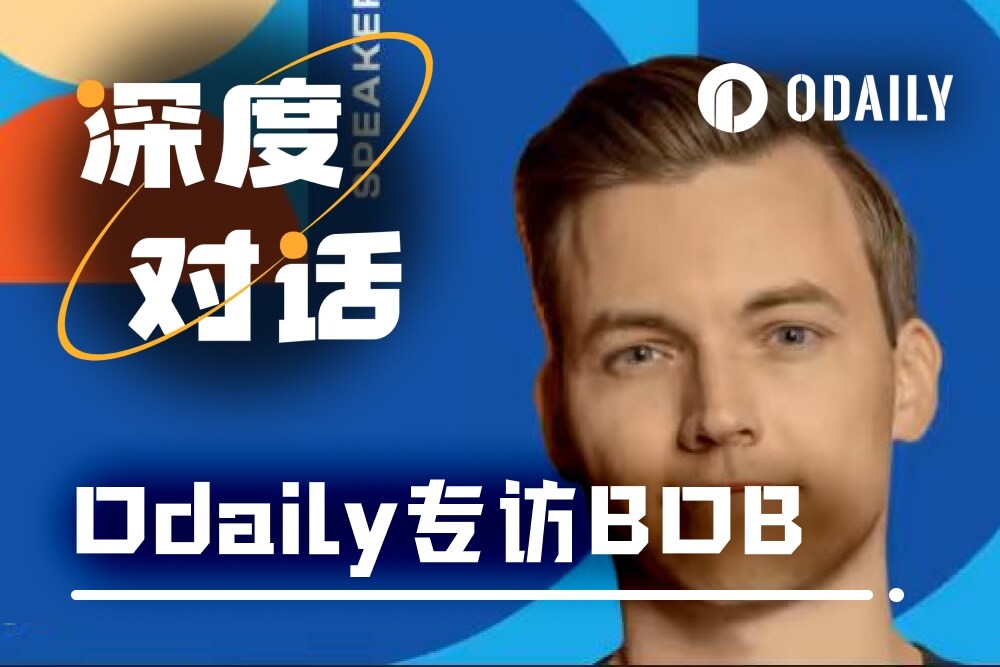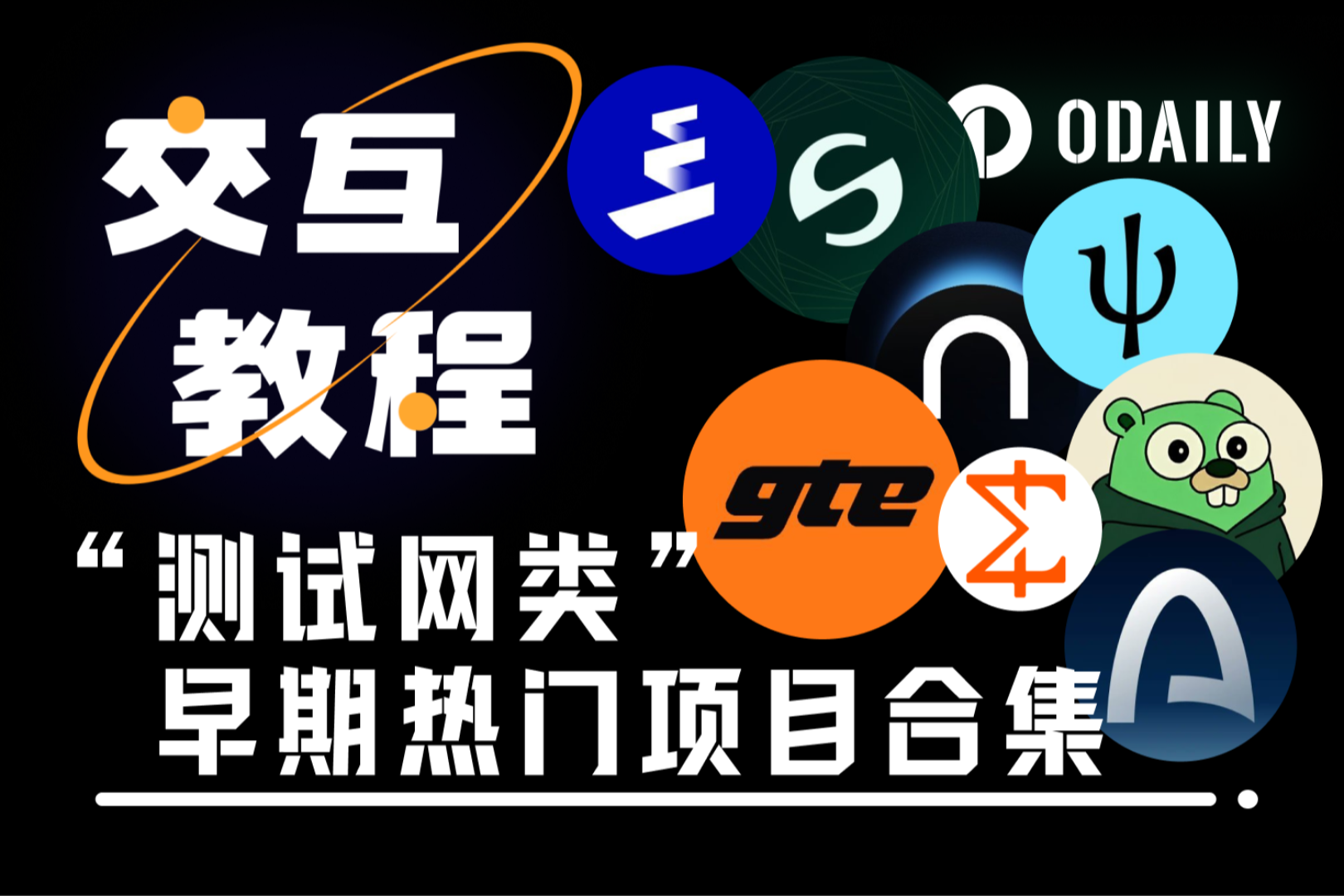Odaily interviews BOB Lianchuang Alexei: The value of trillion-dollar dormant assets will wake up
- 核心观点:BOB通过混合Rollup技术推动比特币DeFi生态发展。
- 关键要素:
- 54万独立用户,65%为高价值活跃用户。
- TVL达2亿美元,年交易量17亿美元。
- 采用BitVM技术构建原生比特币桥。
- 市场影响:唤醒万亿美元沉睡比特币资产。
- 时效性标注:中期影响
Original | Odaily Planet Daily ( @OdailyChina )
Author|jk

Bitcoin, the world's largest crypto asset, has long lacked native DeFi infrastructure, leaving the trillions of dollars in Bitcoin assets largely dormant. With the development of Bitcoin's second-layer technology, how to securely and efficiently build a DeFi ecosystem for Bitcoin has become a focus of industry attention.
As a leading Bitcoin Layer 2 solution, BOB (Build on Bitcoin) is laying the foundation for the mass adoption of Bitcoin DeFi through its innovative hybrid rollup architecture and BitVM technology. In just over a year since its launch, BOB has achieved 540,000 unique users, $1.7 billion in trading volume, and $200 million in TVL.
In this exclusive interview, we spoke with BOB co-founder Alexei about the current state of Bitcoin DeFi, its technical challenges, and how BOB is collaborating with institutions to build trusted Bitcoin DeFi infrastructure. Alexei outlined a grand vision for Bitcoin DeFi, from the liquidity staking flywheel effect to cross-chain interoperability, and from institutional-grade security to a stablecoin ecosystem.
Operational status and key indicators
Odaily: Can you share BOB's current operational data, such as user growth, transaction volume, TVL, or other important milestones?
Alexei: BOB has been online for over a year. We have 540,000 unique users interacting with the chain. Here's a particularly interesting statistic from Flipside Crypto, a leading crypto data provider: BOB's user quality has reached 65%. This means that 65% of our users have multiple interactions, across multiple applications—those are what we call true top-tier users.
By comparison, Solana and Base only have around 30%. Of course, the larger the chain, the more inactive users join. But if you compare us to other new Bitcoin layer-2 projects, their premium user bases are typically less than 10%.
This demonstrates that our strategy of collaborating with top DeFi protocols and partners to build products that users truly care about is working . We aren't attracting users who just click a button and leave, but regular users who are truly organically engaging with Bitcoin DeFi.
In terms of TVL, we currently have approximately $200 million in on-chain deposits and are continuing to grow. We expect to see more capital inflows as more first-tier DeFi integrations are launched.
As for Bob DEX’s trading volume, we processed over $1.7 billion in trading volume in our first year, which is pretty good considering we were just getting started.
In a key milestone, we successfully deployed BitVM to the testnet with institutional partners. Not only did we build it, but we also secured BitVM operational nodes from major institutions. This ensured that when our native Bitcoin bridge goes live, it wouldn't be operated solely by BOB—which would require users to trust us—but by some of the largest institutions in the industry. This provides the necessary foundation of trust to accelerate the adoption of truly trustless Bitcoin DeFi.
BOB is the first hybrid ZK rollup, combining ZK proofs for maximum efficiency. We already have Bitcoin staking ready on our testnet, so we've delivered on all our technical promises in the first year, and even exceeded them.
One of the most exciting products we just launched is Bob Gateway, which we announced yesterday in partnership with BitGo and LayerZero. We provide instant, direct access from native Bitcoin to 11 different chains, enabling 15,000 applications on these networks to offer instant Bitcoin deposits and withdrawals. This unprecedented capability allows them to attract new Bitcoin users while making it easier for those with BTC in hardware and cold wallets to access DeFi without having to navigate different bridges and interfaces.
The chains we currently support include Ethereum, Base, BNB, Sonic, Avalanche, Unichain, and Berachain—all of which are the largest DeFi players in the world.
Solving Bitcoin DeFi’s liquidity challenges
Odaily: What is BOB's roadmap for solving Bitcoin DeFi's liquidity challenges? What are the specific plans?
Alexei: I think it’s important to start with the big picture and explain why we’re building all these technical solutions. The main problem with Bitcoin DeFi is that Bitcoin itself has no native yield—there’s no DeFi infrastructure on Bitcoin.
If you want to use Bitcoin in DeFi, you have to figure out which of the 50+ wrapped Bitcoin options to use and which chains support each option. This complexity is too risky for many users. Our long-term goal is to provide native yield while enabling trust-minimized Bitcoin DeFi.
Regarding native Bitcoin yields, we are building a hybrid chain that combines the security of Bitcoin with the DeFi primitives of Ethereum. We will soon launch Bitcoin staking and a native BitVM bridge. This solves security issues and provides Bitcoin with DeFi capabilities that people can trust.
But the real growth potential lies in what we call the " Bitcoin Liquid Staking Flywheel ." We know staking has found product-market fit on Ethereum and Solana, and that liquid staking tokens represent a multi-billion dollar market on Ethereum, with projects like Lido. Now, it's happening on Bitcoin.
The flywheel works like this: the more BTC staked, the more Bitcoin converted into LST (liquid staking tokens) and used in DeFi. More DeFi activity means more liquidity, more trading volume, and therefore more fees. Higher fees mean better staking rewards, which attracts more Bitcoin, generating more trading volume and fees—a self-reinforcing cycle that could make Bitcoin DeFi bigger than anything we've seen on Ethereum.
The challenge is to start this flywheel. This can only happen if BOB can generate sustainable revenue, which is the staking rewards for Bitcoin stakers. We bootstrap our ecosystem in two ways:
First, we offer the best Bitcoin yields on BOB through a vault strategy , allowing users to easily deposit BTC with trusted DeFi institutional participants. These institutions can generate yield on BOB, other chains, and off-chain, democratizing yield-generating strategies previously only available to funds. Users earn yield-generating LST, which can be used as trading collateral.
Second, we're focused on exchange and cross-chain functionality. Every major chain and application wants access to Bitcoin DeFi, and they're all competing for it. We provide this access, enabling users to move from Bitcoin to different chains, and plan to add direct DeFi deposits, allowing users to directly access lending and exchange positions from Bitcoin, efficiently trading against stablecoins and other assets.
The greater the Bitcoin DeFi transaction volume on these networks, the more revenue BOB earns as a chain. This allows us to generate sustainable revenue that can be used as staking rewards to bootstrap the native BOB LST, which will attract millions or even billions of dollars of dormant Bitcoin liquidity through our more conservative staking model.
We are essentially leveraging active DeFi yield hunters who hold BTC to bootstrap DeFi activity and then provide attractive products to more conservative users.
BOB New Product: One-click access to major L1
Odaily: Regarding the new product Gateway, what is its significance and potential impact on different participants in the Bitcoin ecosystem - users, validators and other roles?
Alexei: Bob Gateway opens new opportunities for three key groups:
For users: Millions of Bitcoin users can now deposit their Bitcoin into all of these different DeFi chains with a single transaction. One-click access to Unichain, one-click access to Base—super simple and direct, helping users get in and out of DeFi faster.
For applications: DApps can now directly accept Bitcoin deposits, attracting a whole new user base. Previously, you were competing for the same Ethereum and Solana DeFi users. If you wanted to accept Bitcoin, you had to tell users they could use wrapped BTC, but they had to figure out where to buy it. Now, you can simply say "Deposit Bitcoin"—it's like adding Bitcoin deposits to traditional fiat deposits.
For validators and node operators: The system runs on the Bitcoin Intent protocol. BOB Gateway is effectively the first trustless Bitcoin Intent protocol. We know Intent networks are incredibly popular and represent the biggest innovation in interoperability between EVM chains and Layer 1 networks. We built this specifically for Bitcoin.
This allows solvers to provide Bitcoin capital, fulfill user requests, rebalance, and generate returns in Bitcoin for providing this service. Running nodes and solving routes actually generates income through routing fees, creating both infrastructure opportunities and providing economic incentives.
Institutional-grade security and regulated custody
Odaily: How should we understand the impact of institutions and regulated custody in the current market context?
Alexei: We've been discussing a lot about solving the problem of native Bitcoin yields and native Bitcoin deposits, which requires a lot of new technologies. However, trust is largely a matter of perception, and not many people trust new technologies immediately.
If I build something and claim it's secure, how do you verify its security? Unless you understand BitVM Bitcoin Script and can review the code, you still have to trust me, and building that trust takes time. You need more people with technical backgrounds to examine, trust, and build a community around the technology.
The beauty of technological innovation is that the longer it runs successfully, the more trustworthy it becomes as the larger community verifies its security. But Bitcoin DeFi can’t wait 10 years for this natural trust-building process to complete.
This is where we combine innovation with institutional-grade security. We bring in the most trusted custodians, validators, and institutional staking providers, convincing them that BitVM and native Bitcoin staking represent significant innovation. When they run these nodes and infrastructure, users can think, "I may not understand the technology, but I trust these custodians and institutions not to steal my money. I trust they've done their due diligence."
Today, when people use wrapped BTC in DeFi, they trust BitGo, and many feel comfortable with that trust. There's currently $40 billion worth of Bitcoin wrapped tokens in DeFi. Our approach means that if you trust these institutions, the same institutions will operate BOB's trustless bridge. This gives users confidence that the technology is mature and operated by a trusted entity, making adoption much easier than relying on anonymous node operators.
Most Bitcoin holders want non-custodial Bitcoin products—they want to keep their Bitcoin and use it to borrow stablecoins, but don’t want to deal with the bridge issue. Currently, this can only be achieved through institutional custody, where large Bitcoin holders keep their Bitcoin with the custodians they trust most.
By collaborating with custodians like FireBlocks and Cobo—including Anchorage Digital, a member of our Institutional Working Group—we can gradually enable conservative Bitcoin holders to enter Bitcoin DeFi. This pragmatic approach of collaborating with institutions, rather than fighting them, is crucial.
When I started researching Bitcoin, I initially criticized wrapped BTC, but later understood that BitGo wasn’t trying to steal Bitcoin—they wanted to build the best solution on the market. Our goal isn’t to replace them, but to partner with them to provide a better, trust-minimized solution because they, too, want to provide the most secure product for their users.
Challenges facing Bitcoin's second layer
Odaily: For BOB and other projects in the Bitcoin ecosystem, such as Bitcoin's second-layer network, what are the biggest challenges in the future in terms of technical barriers and other aspects?
Alexei: A major challenge was managing expectations. Bitcoin's second layer became incredibly popular. We were probably one of the first teams to approach investors several years ago, trying to convince them that Bitcoin's second layer would succeed. When we announced BOB, there was no one else in the market. Then, within a few months, 80 Bitcoin second layer projects suddenly appeared.
A lot of money was raised, but not everyone had the technical expertise. Many teams simply followed the narrative without delivering , which left a bad impression on the market. We must remember that it took five years for Ethereum to go from the first rollup design to the first real Ethereum rollup in production. And from BitVM2—the paper we wrote with Robin, showing how to build a native bridge and rollups—to this point, it's only been a year.
Even though it's only been a year, we're already running on a testnet, making very rapid progress. However, this is new technology that needs time to be audited and built correctly. Some teams make promises that they never deliver, which has always been a challenge. Now that people are seeing teams like BOB actually delivering, along with other strong technical teams, we're rebuilding trust.
The biggest challenge isn't actually the technology—we know how to build it. The biggest challenge is balancing technical innovation with what users actually want. We need to focus on user experience and convince not only crypto-native projects to adopt BitVM and Bitcoin products, but also new players like neobanks and fintechs— Web 2.5 projects that have millions of users who already own Bitcoin but don't know how to use it.
This requires making the product incredibly secure, reliable, and simple while maintaining trustless standards. Combining security with user experience often involves trade-offs, as they often sit at opposite ends of the spectrum. However, this challenge presents the greatest opportunity.
I believe there are no real obstacles to the future of Bitcoin DeFi. We've laid out the blueprint . Teams that are principled, build not just for technology but for product, engage with users, and work closely with both institutional and retail users will succeed. This may be the biggest opportunity in DeFi in the past decade.
Another challenge is the slow pace of Bitcoin and Bitcoin institutions. In crypto, we're used to a startup mindset and rapid innovation, but in Bitcoin, we're dealing with the largest market. Convincing major players with millions of users to try a new technology takes time. However, once you succeed, you're bigger than everyone else. If you win in Bitcoin, you win the entire crypto market, potentially even bigger than some Web 2.0 institutions.
We're moving very fast by Bitcoin standards, with Layer 2 developing at an unprecedented pace. But this is still Bitcoin—I can't simply fork it. We have to work within the existing framework, and we have to be extremely secure. The worst thing we could do is launch an unfinished BitVM and get hacked, because if something goes wrong, people will lose trust in the entire technology, which would be devastating for the industry.
Security is our primary product, which means we have to be disciplined in prioritizing building security, which makes it challenging to move at maximum speed while balancing these requirements.
Stablecoins in the Bitcoin Ecosystem
Odaily: Stablecoins are a hot topic right now. Do you think the Bitcoin ecosystem needs stablecoins, or should it migrate to them from other ecosystems?
Alexei: The Bitcoin ecosystem absolutely needs stablecoins. While I can’t release details yet, BOB has been working with some of the largest stablecoin providers to unlock the network effect between Bitcoin and stablecoins.
Today, the biggest use case for Bitcoin DeFi is using Bitcoin as collateral for stablecoin lending, and major stablecoin players are developing Bitcoin strategies. This is a key part of BOB's roadmap—you can't build DeFi for Bitcoin without stablecoins. It simply doesn't scale.
Consider this: Bitcoin is bigger than all other cryptocurrencies combined. If you want to build DeFi for Bitcoin and generate yield, the rest of the cryptocurrencies are smaller. The only way to scale is to introduce stablecoins.
We are seeing several developments:
Institutional Stablecoins: There will be natively integrated institutional stablecoins on the BOB chain. I can confirm this will happen, but I can’t announce the partners yet.
Bitcoin-backed stablecoins: Many DeFi projects are building Bitcoin-backed stablecoins with different Bitcoin LSTs as collateral, creating attractive interest-bearing DeFi products.
Institutional Bitcoin-backed stablecoins: We will see institutional Bitcoin-backed stablecoin projects partnering with custodians and major ETF participants to allow them to mint stablecoins with Bitcoin as collateral. Several major players are actively exploring this space.
You have Circle, Tether, and other institutional USD stablecoins — why shouldn’t there be institutional Bitcoin-backed stablecoins? While DeFi CDP models like MakerDAO cater to DeFi users, we need products that are also attractive to institutions.
Looking at BOB’s TVL growth, recent growth has been primarily driven by Bitcoin-backed stablecoins — the fastest-growing DeFi use case we’ve seen.
Vision for the Asian market
Odaily: Any other insights you’d like to share with our readers and the Asian market?
Alexei: Bitcoin has always held a significant position in the Asian market. Bitcoin mining, innovation, and adoption largely originated in Asia. For us, building strong relationships, offering compelling products to Asian users, and learning how people interact with Bitcoin and understanding their needs and concerns are crucial.
That’s why we frequently attend conferences in places like Singapore and South Korea, and are building local teams in these countries. We need to learn, understand, and work with institutions and local players to help them develop their Bitcoin strategies.
We’re not trying to change the way people use Bitcoin — we want to understand their needs, be a Bitcoin partner, and collaborate with trusted key players to realize the vision of Bitcoin DeFi.
Our mission is to create the same successful strategy in a decentralized manner, and we look forward to expanding our partnerships in the Asian market.



